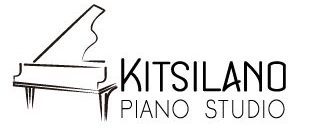Buying a piano for your child can be a tricky task if you are not a musician. How much to spend? How big should the piano be? What is the best type of piano for beginners? These questions are very common for parents, but with the right information, you will be able to make an informed choice so that your child can start their musical adventure in the best possible conditions.
Keep in mind that when you buy a piano, you are not just buying a physical item. A good piano can be the first step towards a passion for music that will accompany him throughout his life, and he will forever keep a strong emotional attachment to his first instrument.
You will have to make the right choice and this guide is there to enlighten you. Before looking at the different types of pianos that you can offer your child, we will first of all look at three very important criteria to take into account before making your purchase: Size, type of keys, and budget to allocate.
Specifications specific to children’s pianos
There are a few special considerations to take into account, but the most important is the size of the instrument, the keys, and of course your budget.
1) The size
Digital pianos come in many shapes and sizes. You will be able to opt for keyboards ranging from 25 to 88 keys.
The only valid reasons for buying a piano with less than 88 keys are space and price.
Pianos with fewer keys are generally less expensive and will have a much smaller footprint than a normal acoustic piano. However, this involves sacrificing playability. While your child may not have the stature to take full advantage of a normal 88-key keyboard, they will be limited in what songs they can play in the future once they grow older, and may ask you to buy him a new piano.
It is, therefore, best as much as possible to acquire a suitable instrument from the start, because understand that even intermediate level pieces require the use of an 88-key piano.
2) The keys
If you’ve ever had the opportunity to play a few notes on an acoustic piano, you’ll probably remember the feel of the keys, which are harder to hit than those on most digital pianos. This is due to the internal mechanism of the acoustic piano, which uses hammers to strike the strings when a key is pressed.
The weight of the keys plays a very important role in the style and technique of a pianist, and this is why digital piano makers have invested a lot in replicating this natural feeling as close as possible.
There are different types of key ballast. Weighted keys will offer a feeling close to a real acoustic piano.
The hammer action keys are what comes closest to a real acoustic piano, with the bass keys given more weight to mimic the heavier hammers on an acoustic piano.
It is better to avoid unweighted keys because while these types of keys will be easier to use at first, your child will not develop the necessary strength in his fingers or the feeling for natural keys, which can hamper the progress. This can really be a problem the day he wants to switch to an acoustic piano. The only reason to opt for a piano without weighted keys is again the budget.
3) The budget
When buying a piano, of course, budget is a crucial factor to consider for many families.
The dilemma many parents face is whether it is wise to spend a large amount of money on a musical instrument when they are not sure that their child will continue to play afterward.
Keep in mind that a beginner needs a good instrument or you may quickly get disgusted, but you don’t need to break the bank. I advise you to consider things in the following way. If your kid wants to get into basketball, are you going to send them to the court with a pair of flip-flops? Probably not … But should you buy him a pair of Jordan? Maybe not for the first training…
You have to reason the same with your first instrument. It will take an investment to allow him to learn in good conditions, but no need to buy him a grand piano from day one. Start with a beginner’s keyboard to let your child get the feel of it and then, move onto an acoustic or digital piano.
